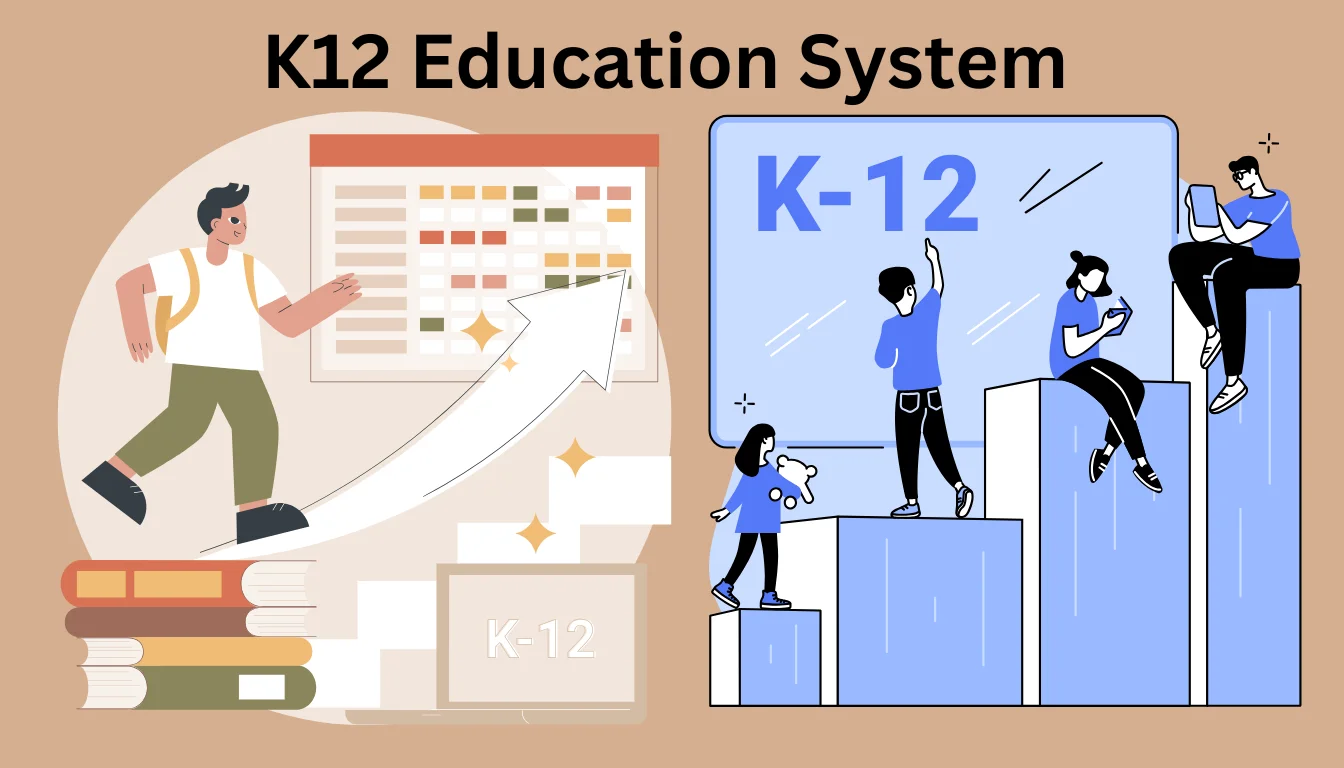“Understanding the K12 Education System: A Comprehensive Guide for Parents and Educators”
The K12 Education System: A Comprehensive Overview
The K12 education system, encompassing kindergarten through 12th grade, is the backbone of American education. This comprehensive framework is designed to provide students with a well-rounded education, preparing them for higher education and future careers. From early childhood development to high school graduation, the K12 system plays a crucial role in shaping the future of young Americans.
Early Foundations: Kindergarten to 5th Grade
Elementary school, covering kindergarten through 5th grade, is the foundation of a student’s educational journey. At this stage, children develop fundamental skills in reading, writing, and basic arithmetic. The curriculum also includes social studies, science, and the arts, fostering a holistic learning experience. Teachers focus on creating an engaging and supportive environment to nurture young minds.
Key Features:
- Kindergarten: Typically for children around 5 years old, kindergarten focuses on early literacy, numeracy, and social skills.
- Grades 1-3: Students build on their foundational skills, learning to read fluently, write simple texts, and perform basic arithmetic operations.
- Grades 4-5: Students begin to tackle more complex subjects, including more advanced reading comprehension, writing, and mathematics. They also start to explore science and social studies in greater depth.
Challenges and Innovations:
- Early Childhood Education: Research shows that high-quality early education can have a lasting impact on a child’s academic success. Many schools are investing in early childhood programs to ensure students start their educational journey on the right foot.
- Technology Integration: Elementary schools are increasingly incorporating technology into their curricula, using interactive whiteboards, educational software, and online resources to enhance learning.
Building Momentum: 6th to 8th Grade
Middle school, comprising 6th to 8th grade, marks a transition from foundational learning to more advanced concepts. Students begin to explore subjects in greater depth, preparing them for the challenges of high school. Middle school education emphasizes critical thinking, problem-solving, and independent learning. Extracurricular activities and clubs also play a significant role in this stage, helping students discover their interests and talents.
Key Features:
- Curriculum Expansion: Middle school students study a broader range of subjects, including advanced mathematics, science, language arts, social studies, and foreign languages.
- Extracurricular Activities: Middle schools often offer a variety of clubs and sports, allowing students to explore their interests and develop teamwork and leadership skills.
- Social Development: This period is crucial for social and emotional development, as students navigate new social dynamics and begin to form their identities.
Challenges and Innovations:
- Social and Emotional Learning (SEL): Middle schools are increasingly focusing on SEL to help students manage emotions, set goals, and build positive relationships.
- Project-Based Learning: Many middle schools are adopting project-based learning approaches, where students work on real-world projects that integrate multiple subjects, fostering deeper learning and engagement.
Preparing for the Future: 9th to 12th Grade
High school, from 9th to 12th grade, is a critical period where students solidify their academic knowledge and prepare for college or the workforce. The curriculum becomes more specialized, offering a range of subjects from advanced mathematics and sciences to humanities and foreign languages. High school also provides opportunities for students to engage in extracurricular activities, sports, and community service, which are essential for personal growth and college applications.
Key Features:
- Advanced Courses: High schools offer Advanced Placement (AP) courses, International Baccalaureate (IB) programs, and dual-enrollment options, allowing students to earn college credit while still in high school.
- College and Career Preparation: High schools provide resources such as college counselors, career fairs, and vocational training programs to help students plan for their futures.
- Extracurricular Activities: High schools offer a wide range of extracurricular activities, including sports, clubs, and community service, which help students build resumes and develop leadership skills.
Challenges and Innovations:
- Standardized Testing: High schools face pressures related to standardized testing, which is often used for college admissions and school accountability. Many schools are working to balance test preparation with a well-rounded education.
- Personalized Learning: High schools are increasingly adopting personalized learning approaches, using data and technology to tailor education to individual student needs.
Challenges and Innovations in the K12 System
The K12 system faces several challenges, including funding disparities, standardized testing pressures, and the need for updated curricula to reflect modern skills. However, it is also a period of innovation, with many schools adopting technology-enhanced learning, personalized education plans, and inclusive practices to meet the diverse needs of students.
Key Challenges:
- Funding Disparities: Schools in affluent areas often have more resources than those in low-income areas, leading to inequities in educational opportunities.
- Standardized Testing: While standardized tests can provide valuable data, they can also create undue stress and narrow the focus of education.
- Teacher Shortages: Many districts face shortages of qualified teachers, particularly in subjects like math, science, and special education.
Innovations:
- Technology Integration: Schools are increasingly using technology to enhance learning, from online learning platforms to virtual reality experiences.
- Personalized Learning: Schools are adopting personalized learning approaches, using data and technology to tailor education to individual student needs.
- Inclusive Practices: Schools are working to create more inclusive environments, supporting students with diverse backgrounds and needs.
Conclusion
The K12 education system is a vital component of American society, shaping the next generation of thinkers, leaders, and citizens. By providing a structured yet flexible learning environment, K12 schools aim to equip students with the knowledge and skills necessary to succeed in an ever-changing world. While challenges remain, ongoing innovations and reforms offer hope for a brighter future in education.







